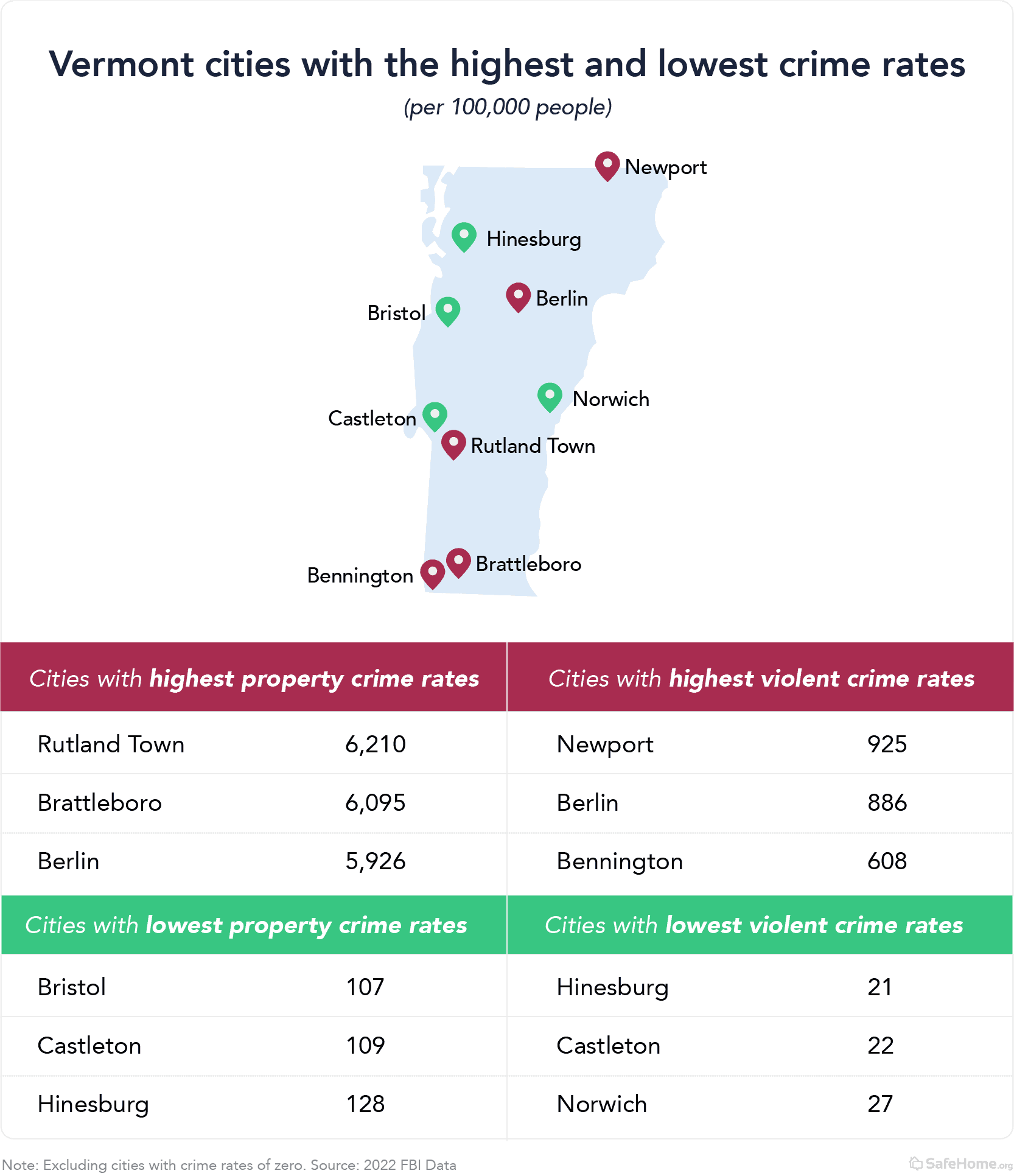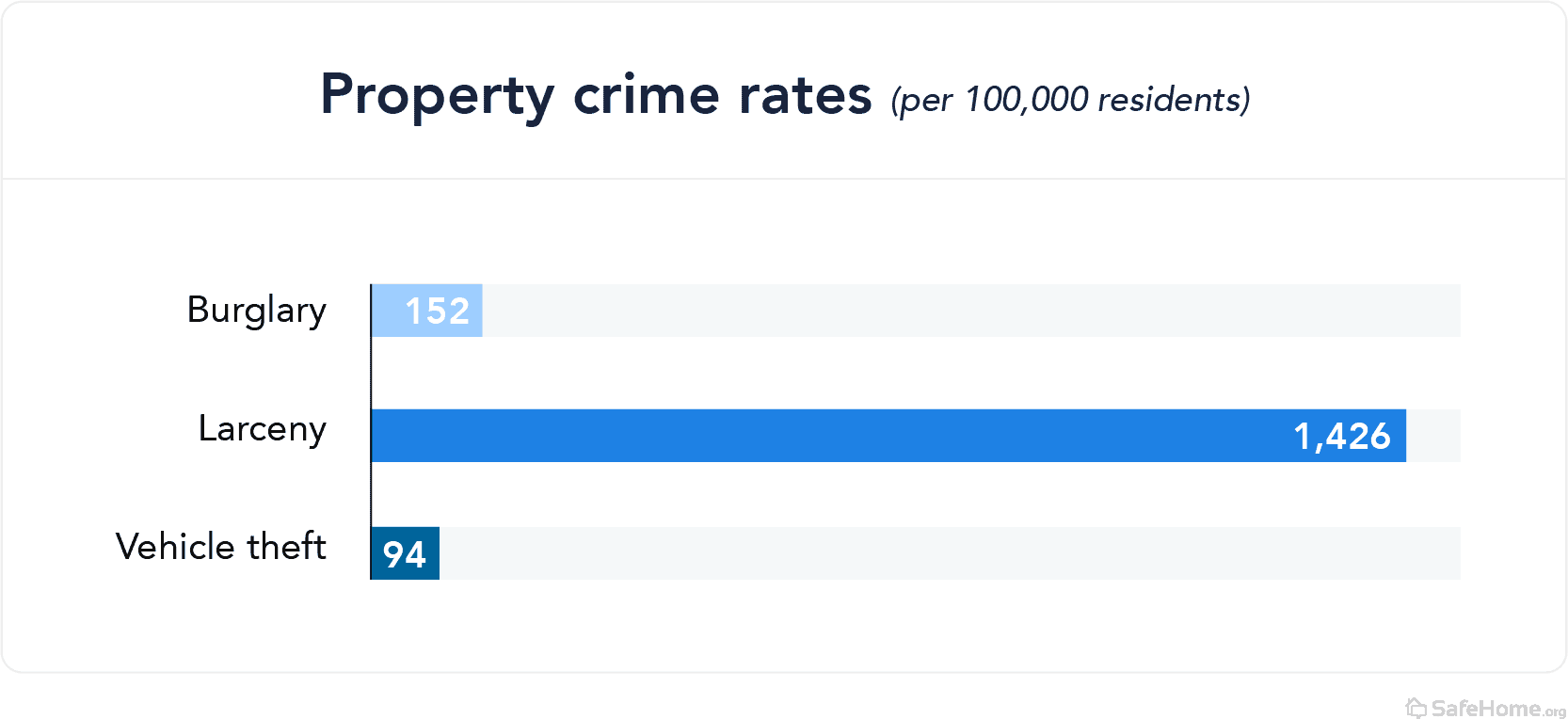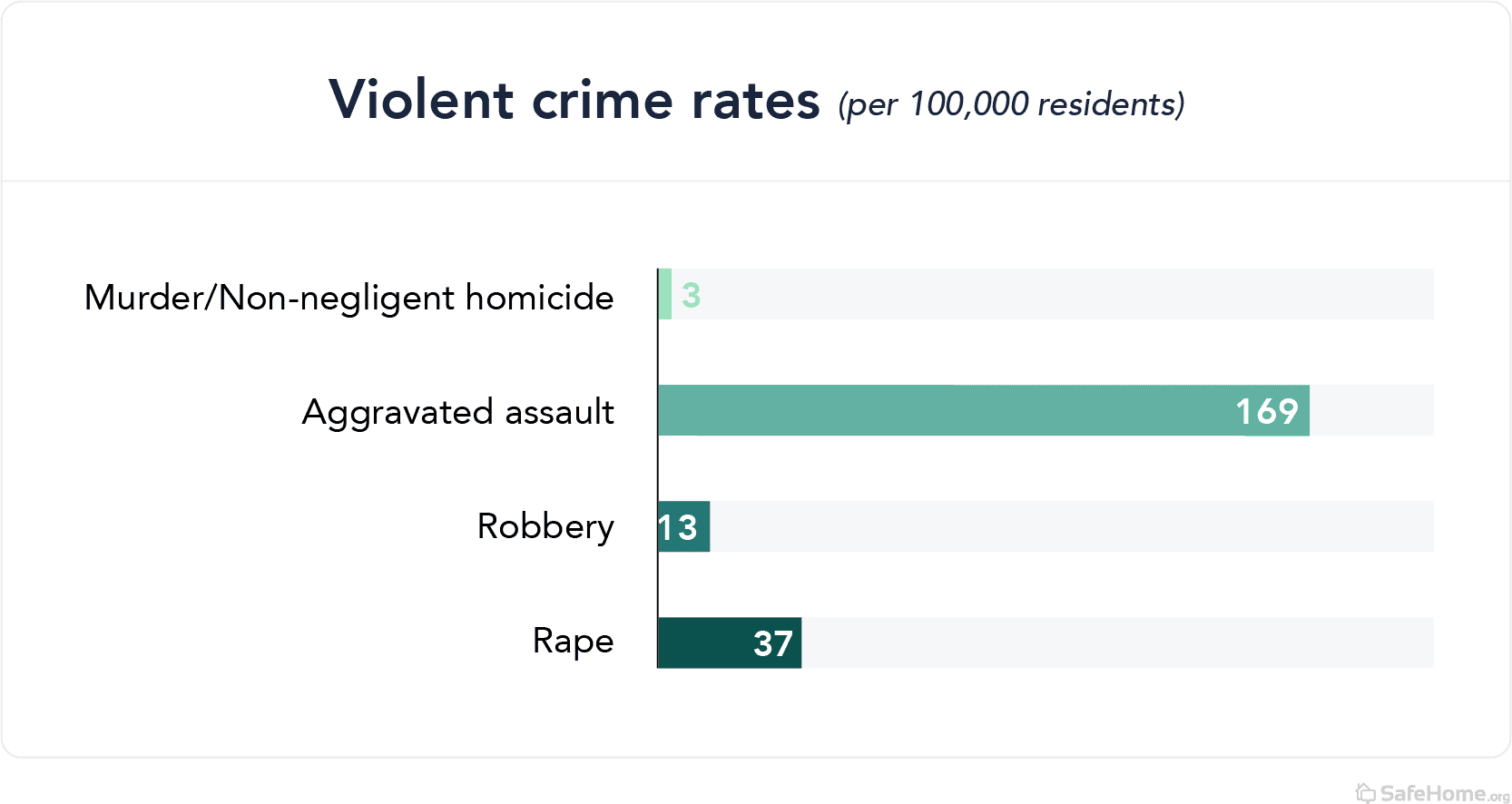The Most Safest and Dangerous Cities in Vermont

A sleepy northern shire state, Vermont has a relatively low rate of property crimes and a statistically very low rate of violent crimes compared to the rest of the U.S. Vermont is currently beating expectations for economic growth; in fact, experts say its post-pandemic growth is surpassing projections.
 The state’s freezing-cold temperatures keep out tourists in the winter, but visitors travel from all over to witness Vermont’s lovely, colorful autumn leaves.
The state’s freezing-cold temperatures keep out tourists in the winter, but visitors travel from all over to witness Vermont’s lovely, colorful autumn leaves.
Vermont doesn't have big cities, so some of the crime associated with dense urban population centers isn't a factor there. Its largest city Burlington has a population of 44,743. Montpelier has just 8,074 people living there, and Newport has 4,455 residents (all as of the 2020 census).
Dairy farming, forestry, manufacturing, insurance, and stone quarrying are some of the major industries there. Although Vermont is statistically one of the safer states to live in with regard to violent and property crimes, it did see a spike in gun violence last year.
Statewide Crime Trends in Vermont
Although Vermont is a small rural state to the sleepy north, next to neighboring Canada, it has seen a recent spike in gun violence; it saw a spate of rampage shootings disturb the state's residents and authorities in 2023. In November, students of Palestinian descent were shot and seriously wounded over Thanksgiving break, according to a report in the Associated Press.
Burlington Mayor Miro Weinberger said several communities — including Newport, Danville, St. Johnsbury, Brattleboro, Castleton, Leicester, and Brookfield — had experienced gun violence in recent months.
Property Crime in Vermont
Vermont's statewide property crime rate is 1,671 per 100,000 residents annually, 14 percent lower than the national average, ranking the Green Mountain State 33rd in the nation.

The least safe city for property crimes in Vermont is Rutland Town (with a property crime rate of 6,210 per 100K residents). The safest city in Vermont is Bristol (with a rate of 107).
Violent Crime in Vermont
Vermont's violent crime rate of 222 per 100,000 residents per year was 42 percent lower than the national average; it ranks the state 43rd in the union for violent crime.

The least safe city for violent crime in Vermont is Newport (with a reported violent crime rate of 925 per 100K people). The safest city is Hinesburg (with a reported violent crime rate of 21 per 100K people), a community with a population of just under 5,000 people.
Our Data
Our data comes from comprehensive reporting compiled by the FBI and accessed via the Crime Data Explorer website. Property and violent crime state figures were drawn from Table 5 of the 2022 Crime in the U.S. Report. Metropolitan figures were found in Table 6, Crime in the U.S. by Metropolitan Statistical Area. City-level figures were drawn from Table 8, Offenses Known to Law Enforcement by State by City. The population figures in that table are U.S. Census Bureau provisional estimates as of July 1, 2020.
Limitations: According to the FBI, the data in the publication tables may differ from those released on the Explorer Pages of the CDE. These variations are due to the difference in methodologies between the publication tables and data displayed on the CDE. Please note that crime statistics are not the sole measure of a city’s safety.
Navigate Crime Data by State
- Alabama
- Alaska
- Arizona
- Arkansas
- California
- Colorado
- Connecticut
- Delaware
- Florida
- Georgia
- Hawaii
- Idaho
- Illinois
- Indiana
- Iowa
- Kansas
- Kentucky
- Louisiana
- Maine
- Maryland
- Massachusetts
- Michigan
- Minnesota
- Mississippi
- Missouri
- Montana
- Nebraska
- Nevada
- New Hampshire
- New Jersey
- New Mexico
- New York
- North Carolina
- North Dakota
- Ohio
- Oklahoma
- Oregon
- Pennsylvania
- Rhode Island
- South Carolina
- South Dakota
- Tennessee
- Texas
- Utah
- Virginia
- Washington
- West Virginia
- Wisconsin
- Wyoming
